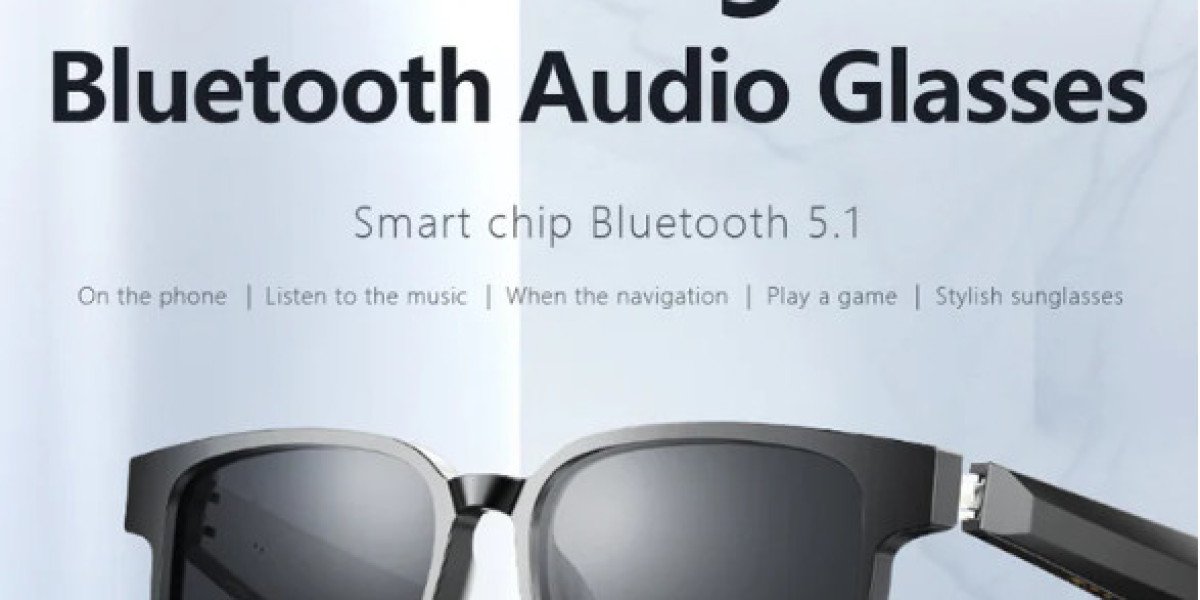In an era where technology seamlessly integrates into our daily lives, smart devices are revolutionizing how we interact with the world. Among the latest innovations, Smart Bluetooth Glasses stand out as a game-changer. Combining fashion with functionality, these high-tech wearables have begun to reshape how we approach communication, entertainment, and even productivity. This article will explore the features, benefits, and potential impact of smart Bluetooth glasses on everyday life.
What Are Smart Bluetooth Glasses?
At their core, smart Bluetooth glasses are eyewear with built-in technology that connects to other devices, typically smartphones, via Bluetooth. These glasses often incorporate speakers, microphones, touch controls, and sometimes even display features like augmented reality (AR) or head-up displays (HUD). The sleek designs ensure they resemble traditional glasses, making them more discreet and fashionable compared to bulky headsets or smartwatches.
Key Features of Smart Bluetooth Glasses
- Hands-Free Communication: One of the primary features of smart Bluetooth glasses is their ability to make and receive phone calls without the need for a handheld device. Built-in microphones and speakers allow users to answer calls directly through their glasses, making them a convenient tool for those on the go. This hands-free communication is perfect for multitasking, driving, or working in environments where handling a phone isn't practical.
- Audio Streaming: Many smart glasses come with high-quality open-ear speakers that allow users to listen to music, podcasts, or audiobooks. Since the speakers are positioned near the ears, they deliver sound directly to the user without isolating them from the environment. This is a safer alternative to headphones, especially in busy areas where hearing ambient noise is crucial.
- Voice Assistant Integration: These glasses often support popular voice assistants like Siri, Google Assistant, or Alexa. With a simple voice command, users can check messages, set reminders, or navigate directions without pulling out their phones. This hands-free control enhances convenience and efficiency in everyday tasks.
- Fitness and Health Tracking: Some models come equipped with sensors that monitor health metrics such as heart rate, steps, and even posture. This transforms the glasses into a fitness companion, offering users insights into their well-being without needing additional gadgets like smartwatches or fitness bands.
- Augmented Reality (AR): While still in its early stages, augmented reality is becoming a significant aspect of smart glasses. AR-enabled Bluetooth glasses can overlay digital information, such as notifications or navigation directions, onto the real world. This blending of digital and physical realities opens up endless possibilities for gaming, education, and professional applications.
- Touch and Gesture Control: Many smart Bluetooth glasses incorporate touch-sensitive frames or gesture recognition, allowing users to control features like volume, music playback, and answering calls with a simple swipe or tap. This intuitive interaction enhances the user experience, eliminating the need to constantly interact with a smartphone.
- Polarized Lenses and UV Protection: Smart glasses often feature high-quality lenses with UV protection or polarized coatings, combining fashion and function. Some models offer transition lenses that automatically adjust to different lighting conditions, providing added convenience for outdoor use.
Benefits of Smart Bluetooth Glasses
- Enhanced Productivity: Smart Bluetooth glasses enable seamless multitasking. Professionals can take calls, listen to audio, or access information without disrupting their workflow. In industries like construction or healthcare, these glasses allow workers to maintain situational awareness while staying connected, improving safety and efficiency.
- Convenient and Discreet Communication: Unlike traditional earphones or headsets, smart Bluetooth glasses offer a more discreet way of communicating. Whether you’re walking in a busy street, attending a meeting, or commuting, you can easily answer calls or respond to messages without drawing attention or fumbling with a device.
- Safety and Situational Awareness: One of the major advantages over traditional headphones is the open-ear design. This allows users to remain aware of their surroundings while still enjoying music or taking calls. For cyclists, runners, or anyone in busy urban areas, this feature significantly enhances safety.
- Fashion Meets Function: With advancements in design, many smart glasses look nearly identical to regular eyeglasses or sunglasses. This blend of fashion and technology ensures that wearers can enjoy the benefits of smart glasses without sacrificing style.
- Hands-Free Navigation: For those who frequently rely on maps or GPS, smart Bluetooth glasses offer a hands-free solution. With turn-by-turn directions projected onto the lenses or delivered through audio, users can easily navigate without needing to check their phones constantly.
- Reduced Eye Strain: Some smart Bluetooth glasses feature lenses that filter out blue light emitted from screens, helping to reduce eye strain for users who spend long hours working on digital devices. This can be particularly beneficial for professionals, students, or gamers who are often exposed to prolonged screen time.
Potential Uses and Applications
- Fitness and Sports: Whether tracking runs, monitoring heart rates, or streaming motivational music, fitness enthusiasts can benefit from the multi-functional capabilities of smart Bluetooth glasses. The open-ear design allows users to stay aware of their surroundings, making it a safer choice during outdoor activities like running or cycling.
- Workplace Efficiency: In various industries such as construction, healthcare, and logistics, smart Bluetooth glasses can improve productivity and safety. Workers can receive instructions, monitor machinery, or consult manuals without taking their hands off the task at hand. Augmented reality features may also enable employees to visualize complex data or diagrams in real-time.
- Education and Training: With the integration of AR, smart Bluetooth glasses could transform the learning experience. Imagine a medical student viewing a 3D model of a human body during a lecture or a mechanic seeing step-by-step repair instructions overlaid on an engine. This hands-on learning can make complex subjects more accessible and engaging.
- Entertainment and Gaming: Augmented reality gaming through smart glasses offers a more immersive experience compared to traditional mobile or console games. By integrating real-world surroundings with digital elements, users can interact with their environment in creative ways, opening up a new dimension of interactive entertainment.
- Accessibility: For people with visual impairments, smart Bluetooth glasses can serve as assistive devices. With features like voice-activated commands, audio notifications, and even AR-enhanced navigation, these glasses can provide a new level of independence and convenience for individuals with disabilities.
Challenges and Future Developments
While smart Bluetooth glasses hold immense potential, there are still challenges to overcome:
- Battery Life: One of the main limitations is battery life. The more advanced features like AR and voice control can drain the battery quickly. Manufacturers are continually working to improve battery efficiency, but for now, users may need to recharge frequently during extended use.
- Cost: High-quality smart glasses can be expensive, particularly models with advanced AR capabilities. As the technology becomes more mainstream, prices are expected to drop, making them more accessible to a wider audience.
- Privacy Concerns: As with any connected device, privacy and security are major concerns. Since these glasses may have built-in microphones or cameras, there are potential risks of misuse. Companies will need to implement robust security measures to protect user data and prevent unauthorized access.
- Limited Field of View in AR: Current AR-enabled glasses often have a limited field of view, meaning that digital information can only be projected onto a small portion of the lenses. As AR technology evolves, future models will likely offer a more immersive and expansive experience.
Conclusion
Smart Bluetooth glasses are a glimpse into the future of wearable technology. With their blend of functionality, style, and convenience, they have the potential to become a staple in our daily lives. From enhancing productivity to improving safety, these glasses offer a wide range of benefits for different types of users. As technology continues to evolve, we can expect even more exciting features and applications to emerge, making smart Bluetooth glasses an essential accessory for the modern age.








